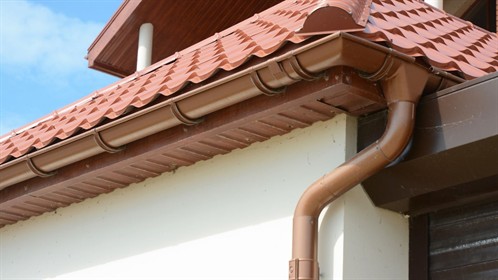 A drain is a common term used when there is a flow of water running down either with water or with liquid waste. In terms of draining storm wastewater, there are various types of drainage systems. For residential areas, there are four types of drainage systems, and they are surface, subsurface, slope, and downspout/gutters. For commercial roof drainage systems, there are also four types, but two of them crossover to residential areas. They are scuppers, internal drains, downspouts, and gutters. There are artificial and natural drainage systems in place to prevent flooding. Artificial drainage systems utilize pipes and wells to rid wastewater, while natural drainage systems use the land. Specifically, with residential areas and commercial roofing, their drainage systems are considered artificial.
A drain is a common term used when there is a flow of water running down either with water or with liquid waste. In terms of draining storm wastewater, there are various types of drainage systems. For residential areas, there are four types of drainage systems, and they are surface, subsurface, slope, and downspout/gutters. For commercial roof drainage systems, there are also four types, but two of them crossover to residential areas. They are scuppers, internal drains, downspouts, and gutters. There are artificial and natural drainage systems in place to prevent flooding. Artificial drainage systems utilize pipes and wells to rid wastewater, while natural drainage systems use the land. Specifically, with residential areas and commercial roofing, their drainage systems are considered artificial.
Surface drainage systems remove excess water from the surface of the land through shallow ditches or otherwise known as open drains. These ditches have a parallel pattern, and the discharge from them flows into collector drains. These shallow ditches act as a canal for runoff water to avoid flooding and water pooling. There is an artificial slope created on the field of land to help with the excess water flow toward the drains.
Subsurface drainage systems, also known as french drains, remove excess water at the root level. It removes drainable porosity water from the subsoil. The french drains are beneath the top layer of soil. Subsurface drains are required to have deep open ditches with underground pipes. There are pipe drains called buried pipes that have openings where the soil water enters. Pipe drains transport the water to the collector drain.
Slope drainage systems allow water to flow from the top of a structure down with the aid of pipes moving down a slope. These systems pipes are anchored in small inclines in this system for water to flow freely away. For this system, a regrading technique is ideal in guiding water into the storm sewer.
The gutter and downspout systems run differently than slope drainage systems; however, they share similarities with water flowing downward. Gutter and downspout systems collect water and reroute it to the ground. Downspouts typically are connected with a gutter system on a building, and they can be rectangular or round. The downspouts usually are made with light, flexible material. The water is carried away from the rooftop to the ground. Both of these systems are known for rooftop water.
Since downspouts and gutters coincide with residential, the focus for commercial roofing will be on scuppers and internal drains. In commercial roofing, there are two main forms of drainage systems called gravity and siphonic. These two forms determine whether someone wants their drainage system to work with gravity or without gravity to carry water away. Gravity has all the water flow from differently sloped segments to one interior drain to flow the water off the roof. Siphonic does not rely on gravity. Instead, it uses a fitted tool at the opening of the drain to prevent air from entering. As a result, this causes the interior drain to lower its atmospheric pressure, suck the water in, and allow the water to move freely without a decline. Both of these are options people can consider before implementing a drainage system for their roof.
A scupper acts similar to a gutter because it has a channel or opening in the sidewalls of a roof that allows water to flow freely. However, they differ because gutters travel along the side of a roof, while a scupper has water flow through before connecting to a downspout or gutter to remove water. Internal drains are common in commercial buildings because they have to catch water under the surface of a roof. Typically, internal drains are where water collects the most or where there is a slight downward grade. Therefore, a common location is the center of a roof.
In sum, the drainage systems from residential areas to commercial roofing are imperative to reduce and rid stormwater. The type of drainage system put in place depends on the structure of the home or the needs of the neighborhood storm sewer systems.
